.
The Crew Trains for Cygnus Arrival While Working Medical Science
.
The International Space Station is getting ready to welcome a new commercial cargo vehicle. The orbital laboratory's six crew members also continued more science work to benefit life on Earth and in space.
Orbital Sciences will launch its Cygnus resupply craft Dec. 17 at 10:07 p.m. EST from Wallops Flight Facility in Virginia. Cygnus will arrive early in the morning Dec. 20 when it will be captured with the Canadarm2 and berthed to the Harmony node. Astronauts Koichi Wakata and Mike Hopkins practiced those robotic maneuvers Thursday morning.
Quelle: NASA
.
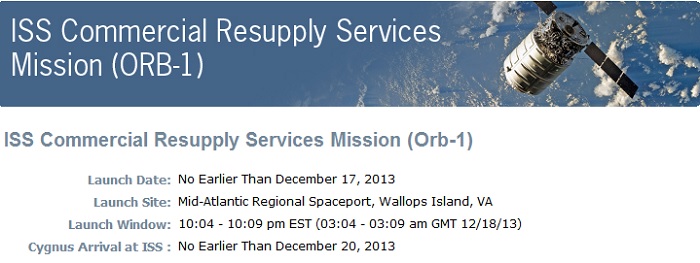
Our Antares and Cygnus teams are in the advanced stages of preparation for the company's first operational resupply mission to the International Space Station under the Commercial Resupply Services (CRS) contract. The launch to the Station originating from the Mid-Atlantic Regional Spaceport (MARS) at NASA's Wallops Flight Facility is currently scheduled for Tuesday, December 17, at approximately 10:04 p.m.
Over the next 11 days, major operational events are scheduled to take place, beginning this weekend with the movement of the Antares rocket to the transporter/erector/launcher (TEL) and the mating of the Cygnus spacecraft with the Antares rocket that will carry it to orbit. Following the mating process, a series of tests to ensure all systems are properly working together will ensue, as will late- and final-loading of cargo, the encapsulation of Cygnus by the rocket's payload fairing, and finally, the roll-out and initial on-pad operations that are currently scheduled for December 15.
.
An Antares rocket carrying Orbital’s Cygnus cargo logistics spacecraft is scheduled to lift-off from Pad-0A at the Mid-Atlantic Regional Spaceport at Wallops Island, Virginia no earlier than December 17, 2013. Antares will boost Cygnus to a target orbit of 210 km by 298 km, from which Cygnus will use its on-board thrusters to raise its orbit to rendezvous and berth with the International Space Station (ISS). Berthing with the ISS is scheduled to occur on December 20, 2013. For this mission Cygnus will be carrying approximately 1459 kg (3,217 lbs.) of cargo to the ISS for NASA.
The Orb-1 mission is the first of eight commercial cargo resupply missions to the ISS under the NASA Commercial Resupply Services (CRS) contract, under which Orbital is slated to deliver up to 20,000 kg of supplies to the station.
Antares Mission Description
The two-stage Antares space launch vehicle utilizes a liquid-fueled first stage powered by two Aerojet Rocketdyne AJ26 engines and a solid motor ATK CASTOR 30B upper stage to boost Cygnus into orbit. The powered launch sequence will last about ten minutes from liftoff through the separation of Cygnus from the launch vehicle.
Cygnus Mission Description
After separation from Antares, Cygnus will deploy its solar arrays and undergo initial check-out. The spacecraft will conduct a series of thruster burns to raise its orbit to bring it within 4 km of the ISS prior to receiving authorization to autonomously rendezvous with the station. When the vehicle approaches to within 12 meters, the astronauts will use the station’s robotic arm to grapple Cygnus and berth it to the Harmony node of the station. Cygnus is planned to remain berthed at the ISS for 42 days during which time the station crew will load Cygnus with materials for disposal. At the end of the mission Cygnus will depart the station and reenter the Earth’s atmosphere.
.
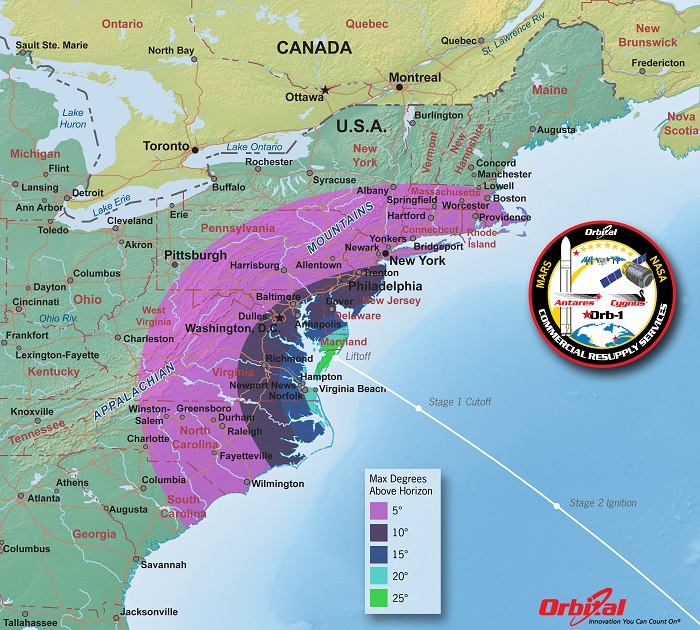
Quelle: Orbital
.
Update: 11.12.2013
.
NASA and Orbital Sciences Corp. Saturday moved the targeted launch date of the Orbital-1 resupply mission to the International Space Station to no earlier than Thursday, Dec. 19 to enable engineers to continue their analysis of data involving a suspect Flow Control Valve in a pump module on the starboard truss of the station that malfunctioned on Wednesday. Orbital’s Antares rocket and the Cygnus commercial cargo vehicle are now scheduled to launch from Pad 0A at the Wallops Flight Facility, Va. no earlier than Dec. 19 at 9:19 p.m. EST. NASA TV coverage of launch will begin at 8:45 p.m. EST.
The delay will allow Orbital’s engineering team to load late scientific cargo into the Cygnus craft on Sunday to protect several days of launch opportunities through the end of next week. Under current planning, the Antares rocket with Cygnus would rollout to the launch pad at Wallops in the early morning hours on Tuesday, Dec. 17. A launch on Dec. 19 would result in Cygnus arriving at the space station for a grapple and berthing to the Earth-facing port of the Harmony module on Sunday, Dec. 22.
The launch is still dependent on NASA engineers resolving a problem with the station’s pump module flow control valve that experienced a problem Wednesday in properly positioning itself so that ammonia coolant can flow properly through the cooling lines of the station’s truss while keeping heat-rejecting equipment at the correct temperature.
Overnight, engineers conducted testing with a component in the Pump Module called a Radiator Return Valve, which is a ball valve that operates in concert with the suspect Flow Control Valve in the pump to control heating in the cooling lines to the Interface Heat Exchangers. The Radiator Return Valve was commanded to various positions to see how the Flow Control Valve might be placed in a fixed position to help actively control cooling loop A, and in turn, allow the system to warm up sufficiently so that the heat exchangers in the loop can operate at a proper temperature. Engineers continue to pore over the data and other techniques to manage the flow control valve. The cooling of station systems is currently being managed through cooling loop B that employs a pump module on the port truss.
In the meantime, Expedition 38 crewmembers Rick Mastracchio and Michael Hopkins worked Saturday in the Quest airlock to begin preparing their spacesuits in the event they are called upon to conduct spacewalks to change out the faulty pump module. If managers direct the crewmembers to perform those spacewalks beginning late next week, the launch of the Orbital-1 mission would be delayed until January.
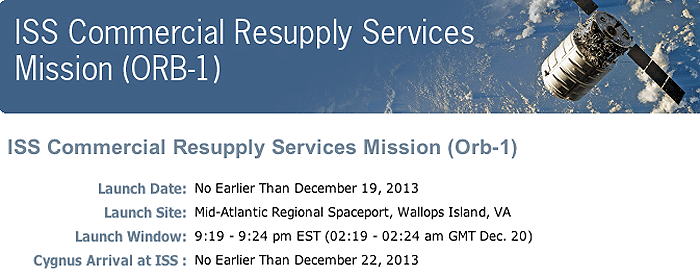
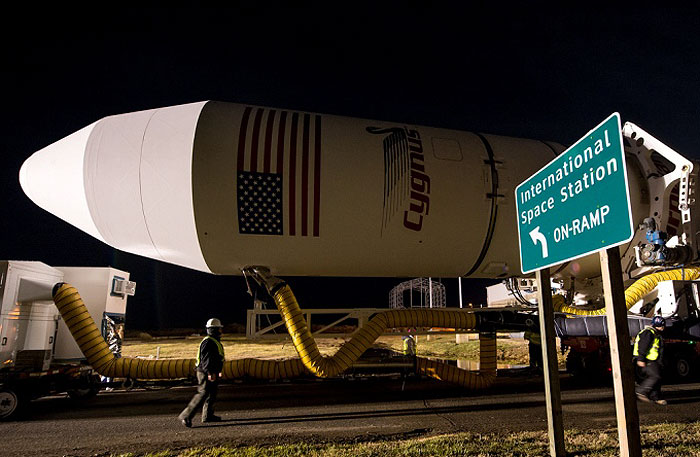
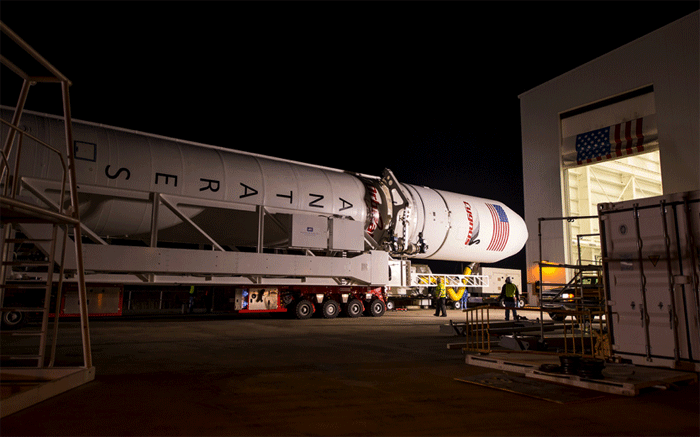

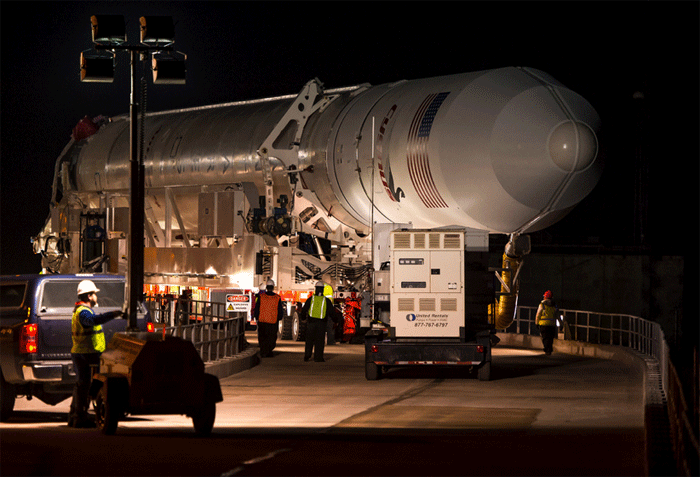
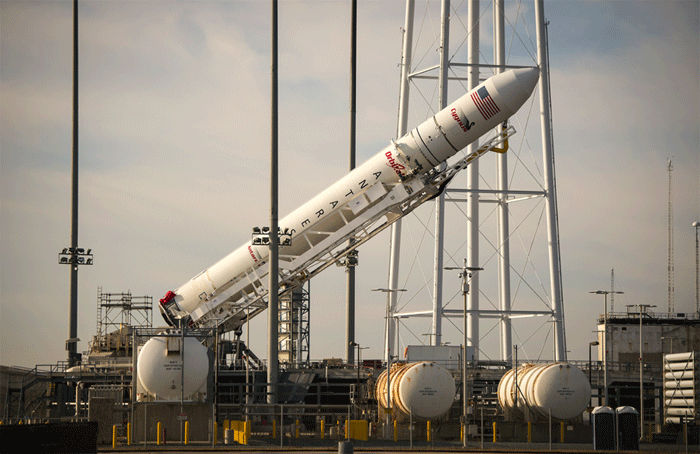
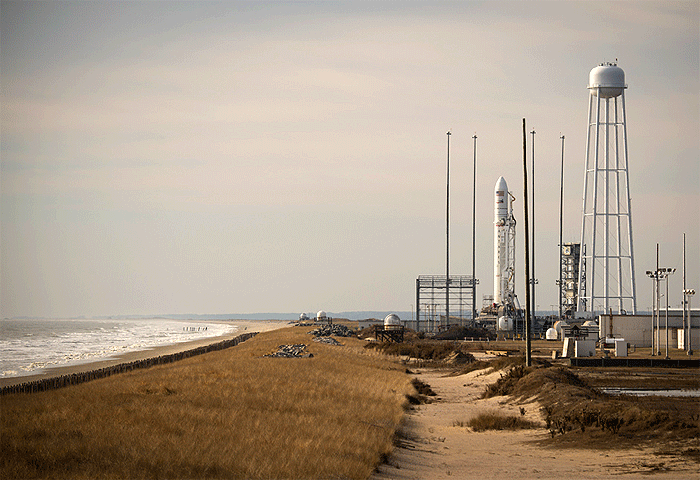
Cygnus Launch Date Set for No Earlier Than Jan. 7, 2014
NASA and Orbital Sciences Corp. have established a new "no earlier than" (NET) launch date of Tuesday, Jan. 7, for the Orbital-1 CRS cargo resupply mission to the International Space Station from NASA's Wallops Flight Facility in eastern Virginia. A launch on Jan. 7 within the targeted window of 1:55 to 2:00 p.m. EST would result in a grapple and berthing at the space station in the early morning hours of Jan. 10. The launch date will continue to be evaluated as NASA proceeds with three upcoming spacewalks by the Expedition 38 crew to replace a cooling pump aboard the orbiting complex.
Following the postponement of the originally targeted Dec. 19 launch, Orbital's Antares team rolled the rocket off the launch pad and back to the Horizontal Integration Facility yesterday at Wallops. The time sensitive payloads that were on Cygnus are being removed today. They will be "refreshed" by the payload provider and returned for reloading into Cygnus. That operation would take place on Jan. 3. Rollout to the launch pad would occur on Jan. 4 to meet a Jan. 7 launch.
A conflict with a previously scheduled operation on the Wallops range has been resolved to allow the Antares launch to be proceed earlier than was originally thought possible after the decision was made to postpone the Dec. 19 launch attempt.
Quelle: NASA
.
Update: 30.12.2013
.
Antares Launch Scheduled Jan. 7
.
The NASA Wallops Flight Facility and Virginia’s Mid-Atlantic Regional Spaceport are set to support the launch of Orbital Sciences’ Corp. Antares rocket at 1:55 p.m. EST, Jan. 7.
The Antares rocket will carry Orbital’s Cygnus cargo spacecraft to the International Space Station.
The cargo craft will be filled with 2,780 pounds of supplies for the station, including vital science experiments to expand the research capability of the Expedition 38 crew members aboard the orbiting laboratory, crew provisions, spare parts and experiment hardware. Also aboard the flight are 23 student experiments that will involve more than 10,000 students on the ground. These experiments will involve life sciences topics ranging from amoeba reproduction to calcium in the bones to salamanders.
The launch may be visible, weather permitting, to residents throughout the mid-Atlantic region from New York City to North Carolina.
Public viewing of the launch will be available at the NASA Visitor Center at Wallops and at the Chincoteague National Wildlife Refuge/Assateague National Seashore. Visitors are reminded that alcohol and pets are not allowed on the Visitor Center grounds.
Quelle: NASA
.
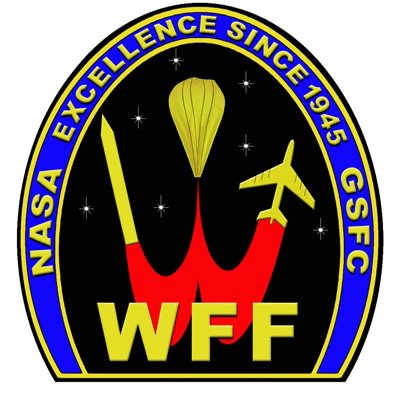
NASA and Orbital Sciences Corp. have established a new "no earlier than" (NET) launch date of Tuesday, Jan. 7, for the Orbital-1 CRS cargo resupply mission to the International Space Station from NASA's Wallops Flight Facility in eastern Virginia. A launch on Jan. 7 within the targeted window of 1:55 to 2:00 p.m. EST would result in a grapple and berthing at the space station in the early morning hours of Jan. 10. The launch date will continue to be evaluated as NASA proceeds with three upcoming spacewalks by the Expedition 38 crew to replace a cooling pump aboard the orbiting complex.
.
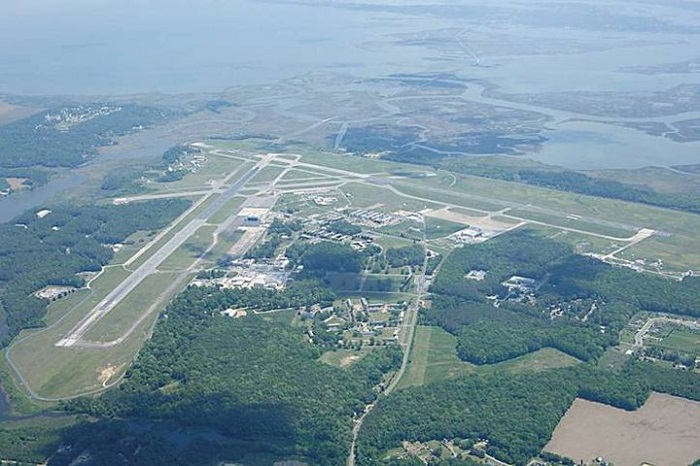
NASA's Wallops Flight Facility
.
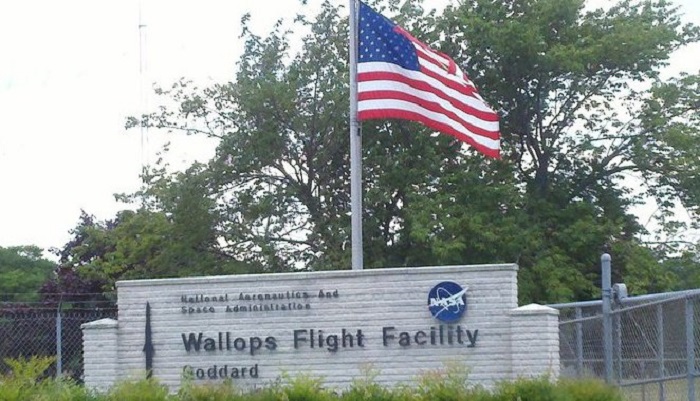
Quelle: NASA's Wallops Flight Facility
.
Update: 3.01.2014
.
NASA Television will provide live coverage of the Jan. 7 launch of the Cygnus cargo spacecraft mission to resupply the International Space Station (ISS).
On the heels of a successful demonstration flight to the space station in September, Orbital Sciences is scheduled to launch the spacecraft on an Antares rocket at 1:55 p.m. EST from Pad 0A of the Mid-Atlantic Regional Spaceport at NASA's Wallops Flight Facility in eastern Virginia.
Beginning at 1 p.m., NASA TV will air a comprehensive video feed of launch preparations and other footage related to the mission, followed by launch coverage at 1:30 p.m.
Prior to the launch, NASA TV will broadcast briefings from Wallops Monday, Jan. 6, previewing the mission's science cargo and pre-launch status at 2 p.m. and 3 p.m. EST, respectively.
Cygnus will carry a total of 2,780 pounds of supplies to the station, including vital science experiments to expand the research capability of the Expedition 38 crew members aboard the orbiting laboratory, crew provisions, spare parts and experiment hardware. Also aboard the flight are 23 student experiments that will involve more than 10,000 students on the ground. These experiments will involve life sciences topics ranging from amoeba reproduction to calcium in the bones to salamanders.
The spacecraft will arrive at the ISS Friday, Jan. 10. Astronauts Michael Hopkins, of NASA, and Koichi Wakata ,of the Japan Aerospace Exploration Agency, will capture the resupply vehicle with the station's robotic arm and install it on the Earth-facing port of the station's Harmony module.
NASA TV coverage of capture and installation will begin at 5 a.m. EST Jan. 10. Grapple is scheduled for 6:01 a.m. Coverage of the installation of Cygnus onto the Harmony module will begin at 7 a.m.
This and future commercial resupply missions by Orbital Sciences and Space Exploration Technologies (SpaceX) will help ensure a robust national capability to deliver critical science research to orbit, significantly increasing NASA's ability to conduct new science investigations aboard the space station.
Quelle: NASA
.
Update: 4.01.2014
.
Freezing forecast forces Antares launch delay
Orbital Sciences has pushed back next week's launch of a commercial resupply mission to the International Space Station by at least one day to Wednesday to dodge frigid temperatures expected on Virginia's Eastern Shore. Liftoff of the privately-developed Antares rocket was set for Tuesday after a three-week delay from mid-December to make room for spacewalks to repair a problematic ammonia coolant loop on the space station, but the long-range forecast for early next week predicts freezing temperatures."The new target date was set due to the extreme cold temperatures that are forecasted for early next week, coupled with likely precipitation events predicted for Sunday night and Monday morning," Orbital Sciences said in a statement.
The company said it is preserving the option to launch Wednesday, Jan. 8, but it is more likely the launch will take place on Thursday, Jan. 9, because of a much improved weather forecast later in the week.
The National Weather Service forecast for NASA's Wallops Flight Facility, the Antares launch site, shows partly sunny skies expected for Thursday with a high temperature of 46 degrees Fahrenheit.
Temperatures must be above about 20 degrees Fahrenheit to launch the Antares rocket, according to Barry Beneski, an Orbital spokesperson. The forecast high temperature for Tuesday is in the mid-20s Fahrenheit.
The launch window Wednesday opens at 1:32:33 p.m. EST (1832:33 GMT) and extends for five minutes. The launch window Thursday begins at 1:10 p.m. EST (1810 GMT), according to Orbital Sciences.
Rollout of the Antares rocket is scheduled to begin around 8:30 p.m. EST Saturday. The rocket will make the one-mile trip from its horizontal integration facility to launch pad 0A riding a self-propelled motorized transporter.
Once at the launch pad, the 13-story Antares rocket will be hoisted upright on its launch mount by hydraulic pistons to begin several days of umbilical connections, vehicle closeouts and arming.
The Antares was already on the pad in mid-December awaiting a launch attempt. Technicians rolled the launcher back to the hangar Dec. 18 and removed the rocket's 12.8-foot-diameter nose shroud to access time-sensitive experiments and other cargo from the Cygnus spacecraft for refurbishment.
A launch readiness review is scheduled for Monday to give senior managers an opportunity to discuss any unresolved issues before proceeding with final launch preparations and the countdown.
The Antares rocket will put Orbital's Cygnus cargo freighter on course toward the space station. If the launch goes ahead Jan. 8, the unmanned resupply ship will arrive at the complex Jan. 12 after an automated rendezvous guided by GPS and laser navigation aids.
Once the visiting spacecraft gets to a point about 30 feet below the space station, astronauts will extend the lab's 58-foot robotic arm to grapple the Cygnus and maneuver it to a berthing port on the Harmony connecting node for several weeks of cargo transfers.
The mission is the first of eight Cygnus resupply flights to the space station under a $1.9 billion contract signed by Orbital Sciences and NASA in December 2008.
NASA and Orbital jointly financed development of the Antares and Cygnus vehicles. The space agency paid Orbital $288 million in a public-private partnership agreement that concluded with last fall's successful Antares and Cygnus demonstration mission to the space station.
Quelle: SN
.
BioServe will conduct experiments in space
BOULDER - BioServe Space Technologies will launch an experiment to the International Space Station next week that ultimately could lead to new drugs that work better on antibiotic-resistant diseases and infections.
BioServe is a NASA-funded research center in the aerospace engineering sciences department at the University of Colorado-Boulder. Funding information for the antibiotics experiment was not immediately available.
The experiment will test the effectiveness of antibiotic drugs on E. coli bacteria in space, according to a statement from the University of Colorado-Boulder. The idea is to find particular genes that resist antibiotics, which could lead to new drugs, improved testing on Earth, and new approaches doing research on antibiotic resistance, said David Klaus, the lead researcher on the project and an associate professor at CU-Boulder.
In past experiments, bacterial susceptibility to antibiotics was reduced during space flight, although researchers have not yet figured out why, Klaus said. Bacterial resistance to antibiotics kills an estimated 100,000 Americans annually, Klaus said. It represents an estimated $20 billion annual expense to the U.S. government in excess health-care costs, he said.
The experiment will be launched Tuesday, Jan. 7, from NASA's Wallops Flight Facility in Wallops Island, Virginia. Another experiment that involves ant behavior in microgravity also will be launched Tuesday. The ant experiment also was designed by BioServe Space Technologies at CU-Boulder.
In the past 25 years, the BioServe research center has designed life science research experiments for more than 40 space missions. Past BioServe partners include pharmaceutical and biotechnology companies, universities and NASA-funded researchers, according to the press statement.
Quelle: NCBR
.
Update: 6.01.2014
.

.
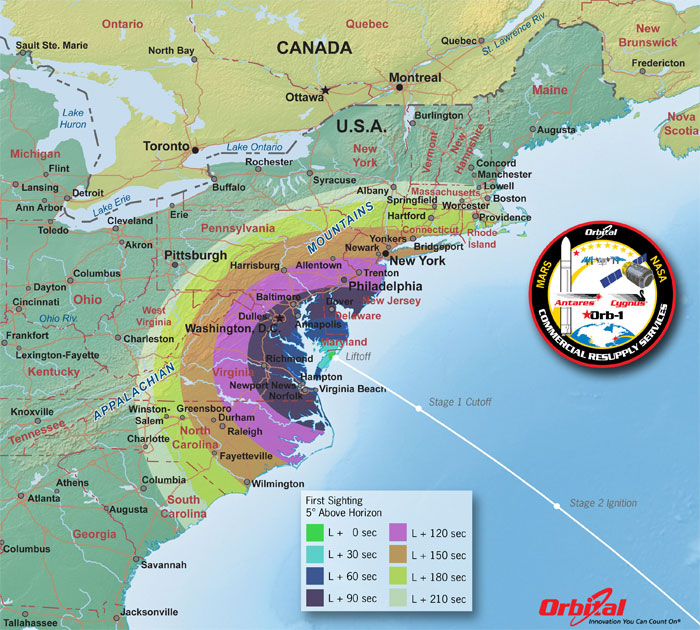
.
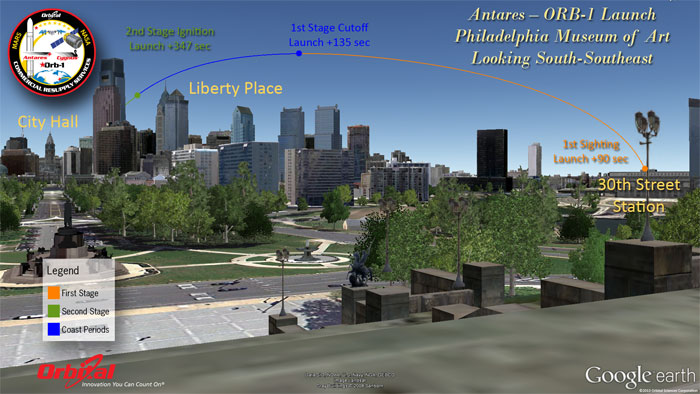
.
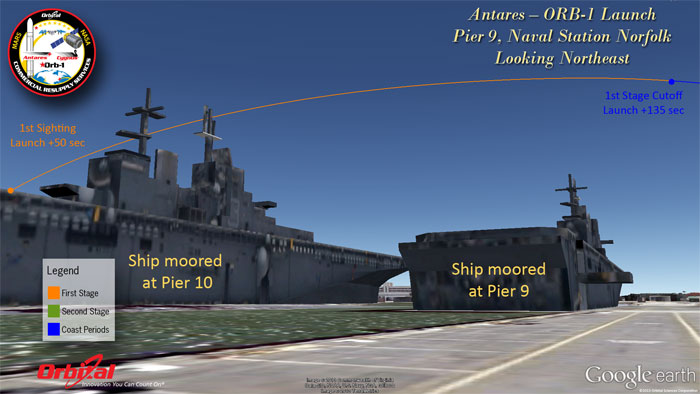
.
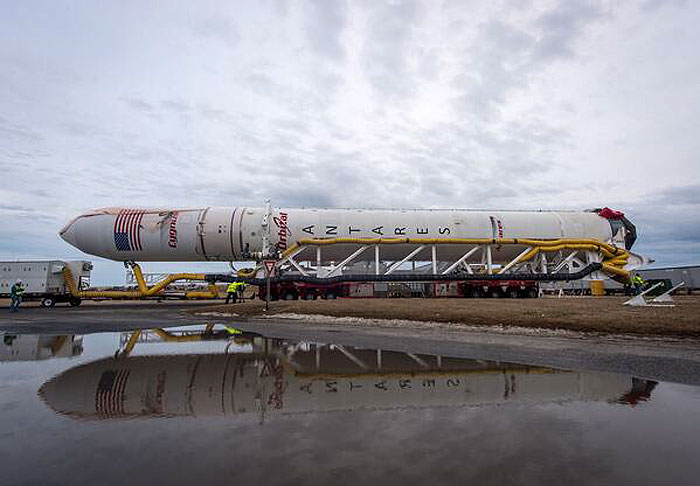
Quelle: Orbital
.
Station Crew Conducts Research; Cygnus on Track for Wednesday Launch
Orbital Sciences Corporation's Antares rocket rolled out to the launch pad at NASA's Wallops Flight Facility, Wallops Island., Va. on Sunday, Jan. 5. Launch of the first Orbital commercial resupply mission to the International Space Station is scheduled for no earlier than Wednesday, Jan. 8 at 1:32 p.m. EST. NASA TV coverage of launch will begin at 1 p.m. EST.
.
Update: 7.01.2014
.
.
Update: 8.01.2014
.
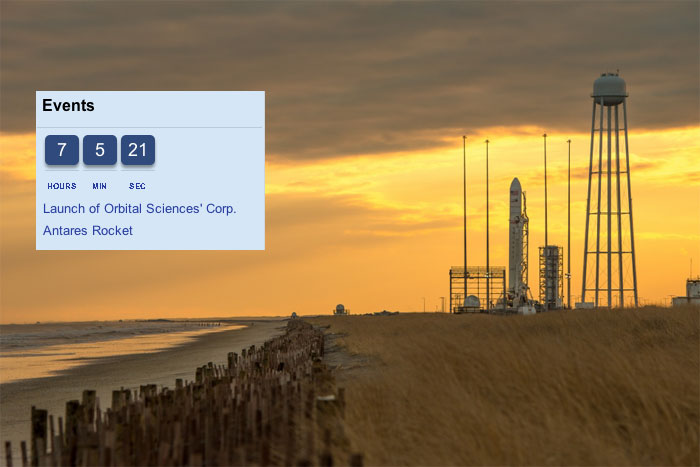
Quelle: NASA
.
NASA to launch Peruvian satellite tomorrow
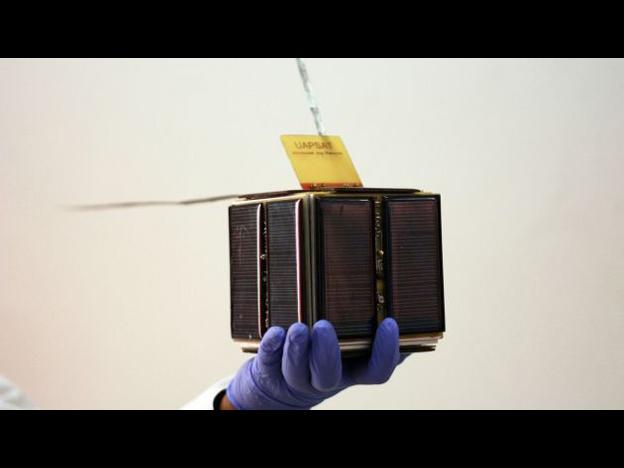
Satellite designed by students and faculty from the Universidad Alas Peruanas will be launched on Jan. 8, 2014.
.
.
Update: 17.00 MEZ
.
.
Update: 23.00 MEZ
.
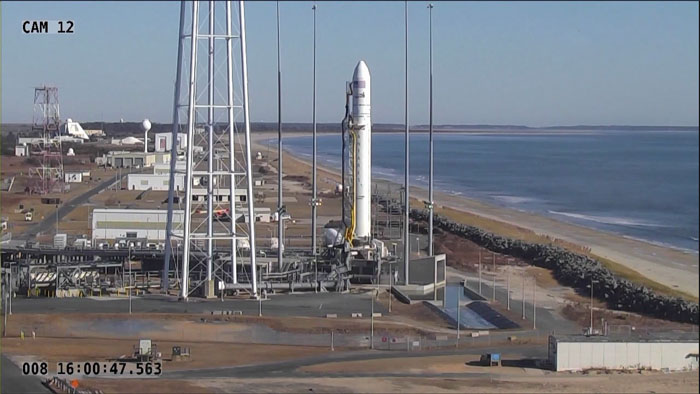
Wednesday Cygnus Launch Scrubbed; Light Duty Day on Station
.
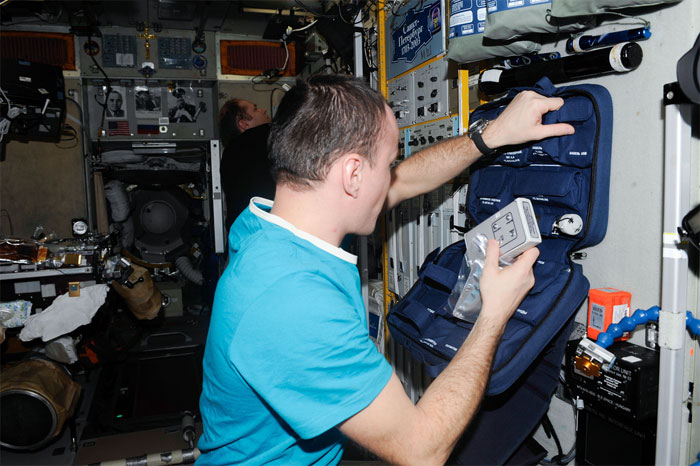
Update: 9.01.2014
.
Launch of ORB-1 on a Antares rocket from Wallops Island, VA launch complex 0A
Launch scheduled for 9 Jan 14 18:07:00 GMT
Local Time : 9 Jan 14 13:07:00 EST
An Antares rocket will launch the inaugural mission to the ISS for the second commercial company to resupply the Space station. Following Orbital Sciences proving flights the ORB-1 mission will be the first of eight contracted CRS missions.
The Antares medium-class rocket will boost the Cygnus spacecraft into a targeted orbit of approximately 130 x 185 miles above the Earth, inclined at 51.6 degrees to the equator. Following in-orbit activation and testing after launch, Cygnus is slated to rendezvous and berth with the Space Station in the early morning hours on Sunday, January 12.
.
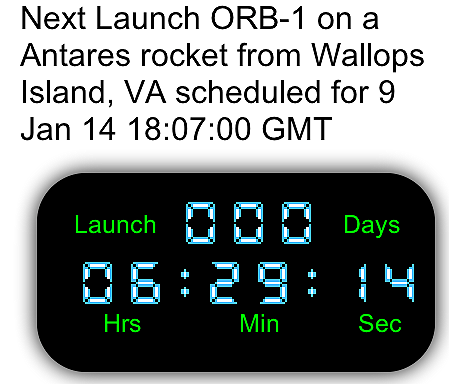
Quelle: Orbital
